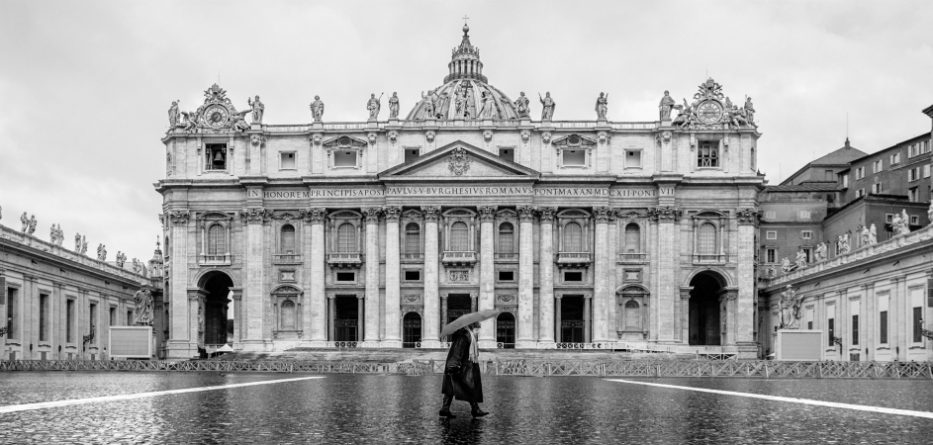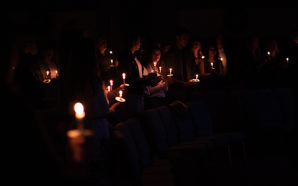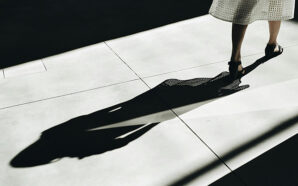How the war in Ukraine is exposing problems in the relationship between the Roman Curia, the papacy, and a disrupted international order
The political order has an impact on the Catholic Church and vice versa.
For example, two major theological developments at and around the time of the Second Vatican Council (1962-65) — episcopal collegiality and the theology of the laity — were part of a reconciliation between Catholicism and political modernity, in particular a reconciliation with democracy and the bourgeoisie.
This reconciliation is now in danger of ending, or least being seriously disrupted, in our current age of political and ecclesial anger — and globalization. Globalization is a capitalistic phenomenon, not a bourgeois one. Talk about the crisis of democracy has become almost banal.
The twilight of a political order has an impact on the Church as well — on its culture, its institutions, and its ability to organize itself and be active in world affairs.
Twilight of a political order and an ecclesiastical system
The war in Ukraine is accelerating the twilight of that order, which was born in 1945. The Vatican has to deal with this because it has consequences that are not less important than other Church-made reforms, including Pope Francis’ recent reform of the Roman Curia.
To the twilight of a political order corresponds also the twilight of an ecclesial and ecclesiastical system, something that is much deeper than just clericalism.
As a side-effect of the crisis of democracy, the idea of reform in the sense of de-institutionalization looks more attractive to the average Catholic activist today.
Church government has been in a state of emergency for a long time: even before than the system of government, the very idea of governing the Church has lost purchase among Catholics themselves.
This can be seen by the fact that the reforms of the Roman Curia seem to be more and more frequent in Church history. Since Vatican II they have been promulgated every two or three decades (1967, 1988, 2022), in almost every pontificate.
These reforms must respond to theological turns (Vatican II), as well as to change in the social, political, and economic order (globalization).
The Vatican’s messaging on the war in Ukraine
But this is more than just a theological problem. It is also a problem of how the theology and tradition of institutions interacts with a given social, bureaucratic, economic system — the Roman Curia, the local Churches, the diplomatic corps of the Holy See, the remains of the Roman “court”, the inner circle of the pope, mass media and social media.
We have seen this clearly recently, where there has been a multiplicity of voices and of messages in these first two months of war in Ukraine.
Within the Roman Curia we have seen the pope and his media circle on the one side; and, though much more marginal, the competent voices to deal with diplomatic and ecclesiastical dimensions of the conflict (the Secretariat of State, the Congregation for the Oriental Churches, the Pontifical Council for Promoting Christian Unity) on the other side.
There have been several course corrections in the Vatican’s messaging on Ukraine because of a lack of institutional alignment of communication.
The most notable was when Ukrainians objected to the proposal of having two women, one a Ukrainian and the other a Russian, carry the cross together during the pope’s annual Good Friday ceremony at the Colosseum.
But problems of communication are never just problems of communication. They are part of a larger picture, that is, the new relationship between the Roman Curia, the papacy, and a disrupted international order.
The Italian effect in the Vatican
First problem: until recently the Vatican could count on a stronger presence and authority of Italians in the Curia and in international organizations (especially the European Union and the United Nations).
But Italy’s standing on the international stage and the reputation of Italians in the Roman Curia have suffered in recent years, no doubt because of the faults of a number of Italians.
This has had the side effect of liberating the Vatican and top ecclesiastical hierarchy from the unjustified majority of Italians in a Church that is global.
The Vatican has embraced diversity and inclusion in its own particular way. But this has costs in terms of the Vatican’s ability to understand the world in a unified way.
To be clear: having an Italian pope or a more Italian Roman Curia was and would be no guarantee of keeping the Vatican more alert politically.
But the contrary is also true: a more “global” Roman Curia does not mean that the Vatican is necessarily more aware of the possible consequences of its words and actions, as well as of the sins of omission, in perceiving threats against the integrity of the Vatican.
A more global Curia also means a Curia that could be less sensitive to the political instability of the Old Continent.
In the last few years, a number of political-religious events in Rome have highlighted a growing alliance between the political far right in Europe, ultra-conservative circles in the Catholic Church and in the Vatican, and Putin’s Russia.
Alarm bells went off when Steve Bannon and friends tried to raid the Catholic Church and to create centers of influence in the Eternal City. Less attention was devoted to the problem of the penetrability of the Vatican by other kinds of influences, specifically Russian.
Russo-philia in Italy
It’s not very different from what happened in Germany and the UK in terms of letting their economic, financial, and political systems become a hub for the projection of Russian interest in the West.
For the Holy See, it’s not simply the fact that, compared to the past, fewer Italians are in charge of key posts in the Vatican.
It’s also what kind of Italians are there, coming from the new Italy that has been fundamentally reshaped in these almost 30 years since the rise of billionaire businessman-turned politician Silvio Berlusconi in 1993-1994.
The war in Ukraine has revealed deep-rooted Russo-philia among some Italian cultural and political elites, both on the left (legacy of the sympathy for the Soviet Union who defeated Hitler) and on the right (a globalized version of the American “culture wars” embraced by Putin and Patriarch Kirill of Moscow).
This is important because the Vatican, the papacy, and the Roman Curia are located in Italy and interact with that environment. To a certain extent they also reflect the weaknesses of the Italian political and intellectual establishment in perceiving the threat coming from Putin’s Russia.
A new “non-aligned” movement
Second problem: the internationalization of the Roman Curia is an important acquisition in terms of resemblance between what the Catholic Church is globally today and its central government – administrative but also symbolic – in the Vatican.
There was a time when the ideological and geopolitical loyalties of the cardinals were more clearly identifiable. That is not so today.
And it’s not just a problem of the religious cultures these new Curia elites represent (on LGBT Catholics, on the environment, on capitalism, etc.), but also of international alliances and loyalties in a world that is now more confrontational between the major players (USA and EU, Russia, China, India and Brazil).
Governments representing more than half of humanity have refused to take a side in the Ukraine-Russia conflict, avoiding the binary accounting of us-versus-them that characterized most of the post-World War II era.
Many countries in Africa, Asia and Latin America — where the “global South” of Catholicism is located (including two key countries for Catholicism: Mexico and Brazil) — have taken an independent position vis-à-vis the war in Ukraine.
This is a return to the Cold War era “nonaligned” movement that is not entirely different from Francis’ interpretation of geopolitics today.
We are living in a world that is more complicated than it was during the Cold War or the 30 years of the post-Cold War period.
The old geopolitical rifts have not only changed but, thanks to more diverse Catholic clerical elite in Rome and connected to Rome, these rifts have been re-defined, especially in light of global social issues such as LGBT rights, the role of religion in politics and religious liberty.
Francis has made the College of Cardinals more global, but many of these top-ranked clerics barely know each other. Most of them have never met, in person, as a college.
And that means the next conclave will be uniquely unpredictable and exposed to new kinds of political interest and rifts.
Massimo Faggioli is professor of theology and religious studies at Villanova University. Follow him on Twitter: @MassimoFaggioli.
Reproduced with permission from La Croix International and Massimo Faggioli.








